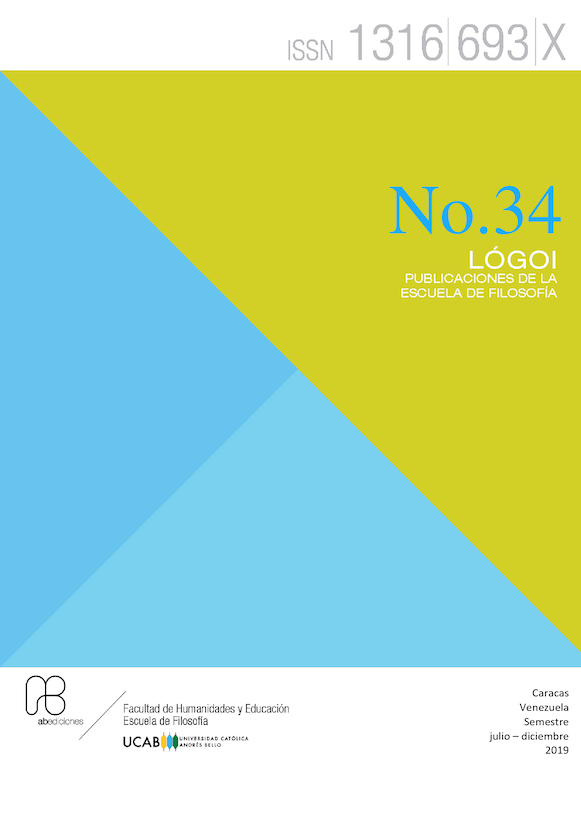Robinson’s Technique: Towards a media theoryin Simón Rodríguez
DOI:
https://doi.org/10.62876/lr.vi34.4098Keywords:
Abstract
The peculiar visual arrangements of the writings of Simón Rodríguez (1769-1854) are one of the most singular and
original aspects of his work, yet one of the least studied. This article argues that the graphic configuration of Rodríguez’s texts
sets out a singular theoretical reflection about the medial and material attributes of writing. This “media theory” draws attention to
aspects that are ignored or repressed under the phonocentric regime that rules the “lettered city” in the context of early republicanism in
the Americas. This article lays out in a preliminary way some theoretical and methodological lines of inquiry that allow a more comprehensive
study of said theory.
Downloads
References
Ángel Rama: La ciudad letrada, Hanover, New Hampshire, Ediciones del Norte, 1984.
Cito el pasaje que se refiere a “la lengua y la mano”:
Nous-mêmes, à ne considérer que la partie matérielle de notre être, nous ne sommes au-dessus des animaux que par quelques rapports de plus; tels que ceux que nous donnent la langue & la main; & quoique les ouvrages du Créateur soient en eux-mêmes tous également parfaits, l’animal est, selon notre façon d'apercevoir, l'ouvrage le plus complet de la Nature, & l'homme en est le chef-d'œuvre. (Ibid., p. 2)
Condillac, en donde éste compara el acto de reflexionar con la contemplación de una pintura.
Eugenio Montejo: “El tipógrafo de nuestra utopía”, pp. 36-39, Vuelta, no. 139, México D.F., junio de 1988. Tal como muestra el poeta venezolano en este iluminador ensayo, si bien los textos de Rodríguez evidentemente ni son poemas ni deben considerarse como tales, no es menos cierto que solicitan procedimientos de observación y análisis textual similares a los que propone la poesía, especialmente la que participa de la experimentación vanguardista.
Georges-Louis Leclerc, Conde de Buffon: Histoire naturelle, générale et particulière, vol. 2, Paris, 1749, pp. 1-2. En: https://hdl.handle.net/2027/ucm.5327877929 [Consulta: 18 de julio de 2018].
Hans Ulrich Gumbrecht: Production of Presence: What Meaning Cannot Convey, Stanford, Stanford University Press, 2004. A menos que se indique lo contrario, todas las traducciones son mías.
Ibid. 31-2, 104.
Ibid. 124-5.
Ibid. 124. Nye enfoca su análisis en el Discours sur le style (1753) de Buffon y el Essai sur l’origine des connaissances (1746) de
Ibid. 125.
Ibid. 518-9.
Ibid 520.
Ibid. 523
Jossiana Arroyo: “Lenguaje y techné: La gramática de las Américas”, pp. 29-53, Revista de Crítica Literaria Latinoamericana, vol. XXXVI, no. 71, Lima-Boston, CELACP, 2010; Ronald Briggs: Tropes of Enlightenment in the Age of Bolívar: Simón Rodríguez and the American Essay at Revolution, Nashville, Vanderbilt University Press, 2010; Arturo Gutiérrez Plaza: “Simón Rodríguez: América en los sueños de su razón”, pp. 13-38, Anales de literatura chilena, vol. 12, no. 16, Santiago de Chile, Pontificia Universidad Católica de Chile, 2011; Nicola Miller: “The ‘Immoral’ Educator: Race, Gender and Citizenship in Simón Rodríguez's Programme for Popular Education", pp. 11-20, Hispanic Research Journal, vol. 7, no. 1, Londres, Department of Modern Languages and Cultures, Queen Mary University of London, 2006; Juan José Rosales: Filosofía y transformación social. Reflexiones en torno a sociedad y civilización en Simón Rodríguez, Caracas, Fondo Editorial de Humanidades, UCV, 2014.
Krämer, Sybille, “Is There a Diagrammatic Impulse With Plato?”, p. 164.
Krämer, Sybille, “Writing, Notational Iconicity, Calculus”, p. 522
Simón Rodríguez: Obras completas, Carlos H. Jorge y Juan Rosales (comp.), Caracas, UNESR, 2016, p. 11. En lo que sigue indicaré las referencias a esta obra con la abreviatura SR, seguida por el número de página.
SR 48.
SR 54.
SR 84, 58.
SR 218-9, las cursivas son mías.
SR 382.
SR, 392.
Susana Rotker: “Nation and Mockery: The Oppositional Writings of Simón Rodríguez”, pp. 119-133, Doris Sommer (ed.), The Places of History: Regionalism Revisited in Latin America, Durham, Duke University Press, 1999.
Sybille Krämer: “Writing, Notational Iconicity, Calculus: On Writing as a Cultural Technique”, pp. 518-537, MLN, vol. 118, no. 3, Baltimore, Johns Hopkins University Press, 2003, p. 518.
Tal visión que privilegia el vínculo entre cuerpo, y específicamente la mano, materia y logos ha sido motivo de reflexión para otros pensadores. Por ejemplo, Hegel (un contemporáneo de Rodríguez) afirma en la Fenomenología del Espíritu que la esencia del individuo, determinada por sus características propias y su formación, tiene su “aparición fenoménica y exterioridad primero en su boca, su mano, su voz y su letra manuscrita”. Véase Georg Wilhelm Friedrich Hegel: Fenomenología del espíritu, trad. Antonio Gómez Ramos, Madrid, Abada, 2010, p. 393. Otros filósofos que se han aproximado a la cuestión de la mano y el logos, aunque ciertamente pensando en problemas distintos a los que trata Rodríguez, son Nietzsche, Heidegger y Derrida.
Véase Ángel Rosenblat: “Las ideas ortográficas de Bello”, ix-cxxxviii, Obras completas de Andrés Bello: Estudios gramaticales, vol. 5, Caracas, Ediciones del Ministerio de Educación, 1951.
Véase Edward Nye: Literary and Linguistic Theories in Eighteenth-Century France: From Nuances to Impertinence, Oxford, Oxford University Press, 2000. Cabe añadir que Buffon fue un autor muy conocido y leído, equivalente a un best-seller, tanto en su época como a lo largo del siglo diecinueve.
Véanse: Krämer: Op. Cit. y Sybille Krämer: “Is There a Diagrammatic Impulse With Plato? ‘Quasi-diagrammatic-scenes’ in Plato’s Philosophy”, pp. 163-77, eds. Sybille Krämer y Christina Ljunberg, Thinking With Diagrams: The Semiotic base of Human Cognition, Boston y Berlín, De Gruyter, 2016; Bruno Latour: “Visualization and Cognition: Drawing Things Together”, pp. 1-40, Knowledge and Society: Studies in the Sociology of Culture Past and Present, no. 6, Greenwich, Conn., JAI Press, 1986, disponible en: http://www.bruno-latour.fr/sites/default/files/21-DRAWING-THINGS-TOGETHER-GB.pdf.
Published
How to Cite
Issue
Section
License
Copyright (c) 2022 Array

This work is licensed under a Creative Commons Attribution-NonCommercial-ShareAlike 4.0 International License.







.png)











